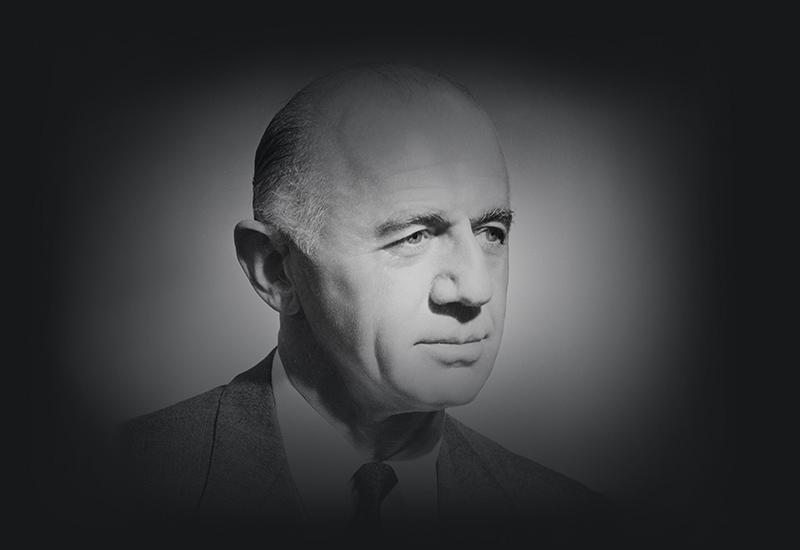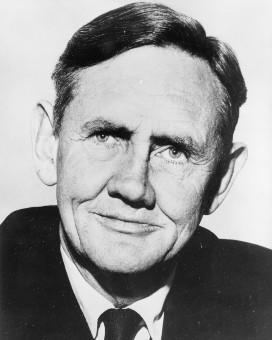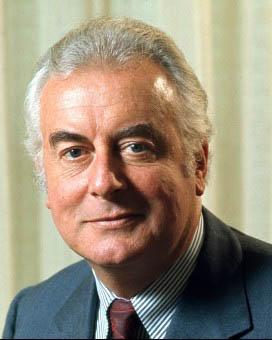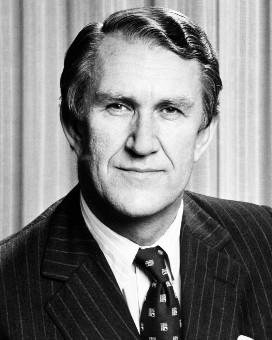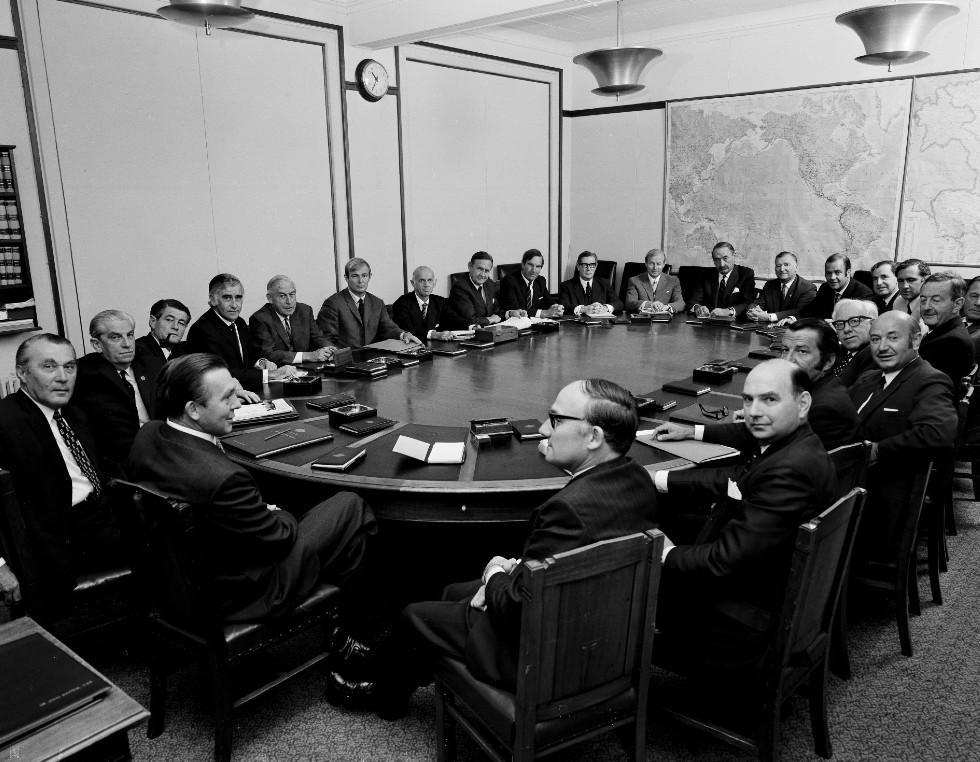
Prime Minister William McMahon's new ministers seated around the Cabinet table in Parliament House. Seated clockwise from left are Senators Cotton and Anderson, Dr AJ Forbes, Billy Snedden, Alan Hulme, Doug Anthony, the Prime Minister, John Gorton, Ian Sinclair, Nigel Bowen, P Nixon, C Barnes, Senator Drake-Brockman, Phillip Lynch, Ralph Hunt, Andrew Peacock, Doug Fairbairn, Leslie Bury, WC Wentworth, Reg Swartz, Don Chipp, Dr Mackay, KMK Cairns and Senator Greenwood, 1971. NAA: A1200, L94982
William McMahon became Prime Minister on 10 March 1971, at the age of 63. When his government lost office at the federal election in December 1972, he became the first prime minister to lose office at the ballot box since Ben Chifley lost the 1949 election.
Governor-General Paul Hasluck swore in the Coalition ministry of McMahon and Country Party leader Doug Anthony on 10 March 1971. There were 15 Cabinet positions – 17 in the outer ministry and 10 ministers without a portfolio.
After the successful referendum in May 1967, the Australian Government was no longer prevented by the Constitution from governing on behalf of Indigenous Australians. The McMahon ministry was the first to have a Minister for Aboriginal Affairs. William Wentworth was appointed to this post, with Peter Howson the junior minister assisting.
The ministry was far from stable. Like John Gorton, McMahon failed to achieve unity. The former prime minister was himself part of the problem – the price of his resignation as leader had been the deputy leadership of the Liberal Party and the senior Cabinet post of Defence. Gorton resigned from Cabinet in August 1971 after McMahon challenged him with breaching Cabinet solidarity by charging other ministers with leaking Cabinet information.
McMahon was no more fortunate outside parliament. Leader of the Opposition Gough Whitlam led a Labor delegation on a visit to the People’s Republic of China in July 1971. McMahon seized on this, charging Whitlam with being a pawn of a Communist power and a spokesman for the enemy being fought in Vietnam. Then on 15 July 1971, United States President Richard Nixon announced his proposed visit to China. The Opposition coup and McMahon’s unfortunate attempt to gain political capital was an embarrassment for the Coalition.
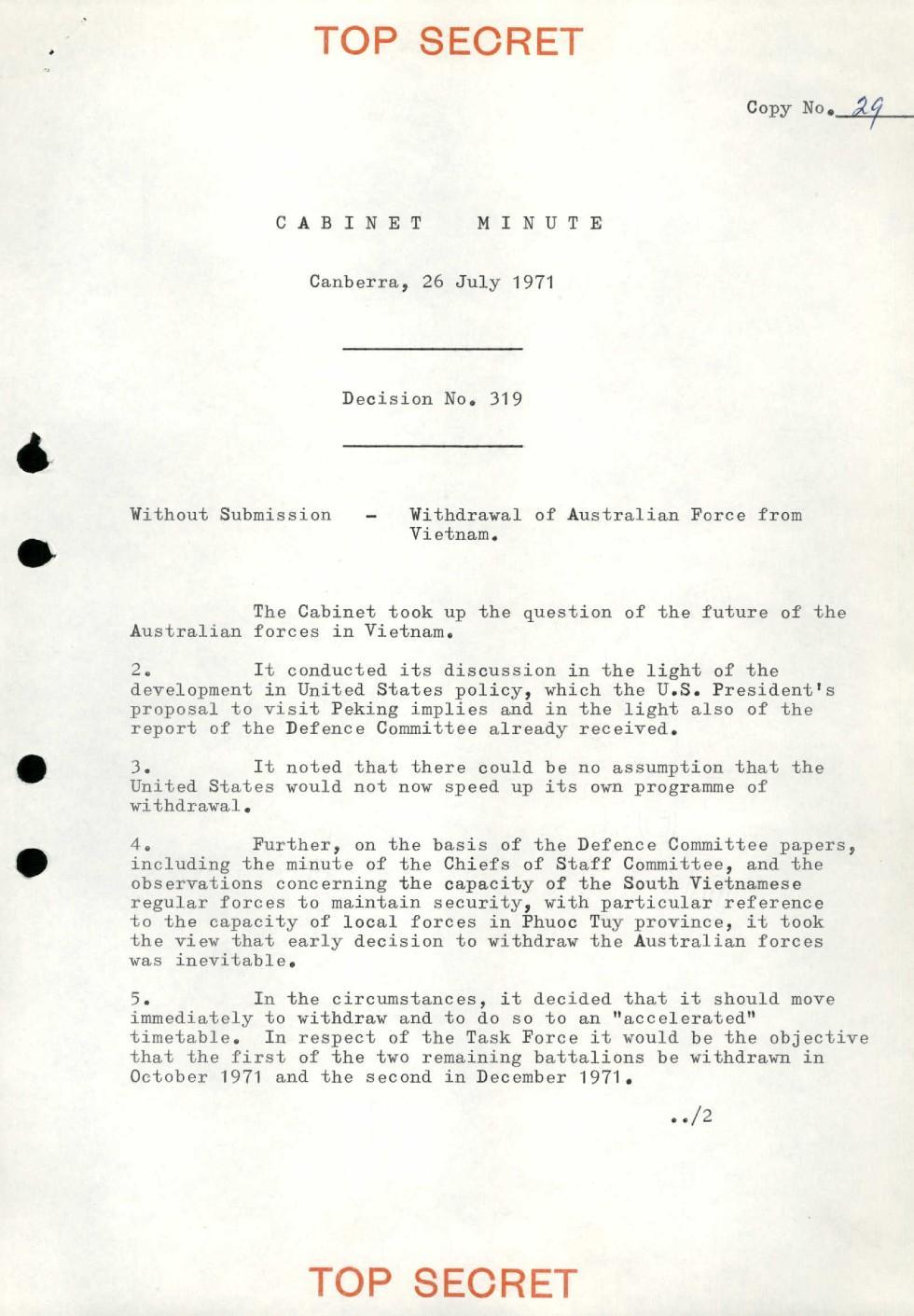
The top secret Cabinet minute recording the decision to withdraw Australian troops from Vietnam by the end of 1971, dated 26 July 1971. NAA: A5909, 319, p.1
On 26 July 1971, Cabinet decided on an ‘accelerated withdrawal’ of Australian troops in Vietnam, anticipating a scaling down of the US forces there.
McMahon modified the offshore mining legislation of the Gorton government, and Cabinet dealt with new issues in the delineation of the continental shelf between Australia and Indonesia.
Aboriginal land rights and economic development were firmly on the McMahon government’s agenda. The government accepted the recommendations of the Gibb committee on Aboriginal employment in the pastoral industry in the Northern Territory, including the lease of land at Wattie Creek to the Gurindji people who had occupied a section of the Vestey company lease in protest since 1966. The 1971 decision in the Gove land rights case in the Northern Territory Supreme Court had rejected Yolngu rights to land in eastern Arnhem Land and prompted protests. In 1972, protestors set up a tent embassy on the lawns in front of Parliament House. That same year, the McMahons toured the Northern Territory, opening a new residential college outside Darwin for Indigenous students.
Late in 1972, the government faced both an economic decline, with inflation and unemployment increasing, and a federal election. The election on 2 December returned a Labor government and on 5 December 1972, Gough Whitlam was sworn in as Prime Minister.

Sonia McMahon, Prime Minister William McMahon and Navy Minister Jim Killen on the campaign trail in December 1972, before voters elected the Labor government led by Gough Whitlam. NAA: A6135, K5/12/72/43
Sources
- Hughes, Colin, Mr. Prime Minister: Australian Prime Ministers, 1901–1972, Oxford University Press, Melbourne, 1976.
- Sekuless, Peter, ‘William McMahon’, in Michelle Grattan (ed.), Australian Prime Ministers, New Holland, Sydney, 2000.
From the National Archives of Australia collection
- Australia–Indonesia discussions on delimitation of Continental Shelf – Decision 111 (GA), 1971, NAA: A5908, 42

